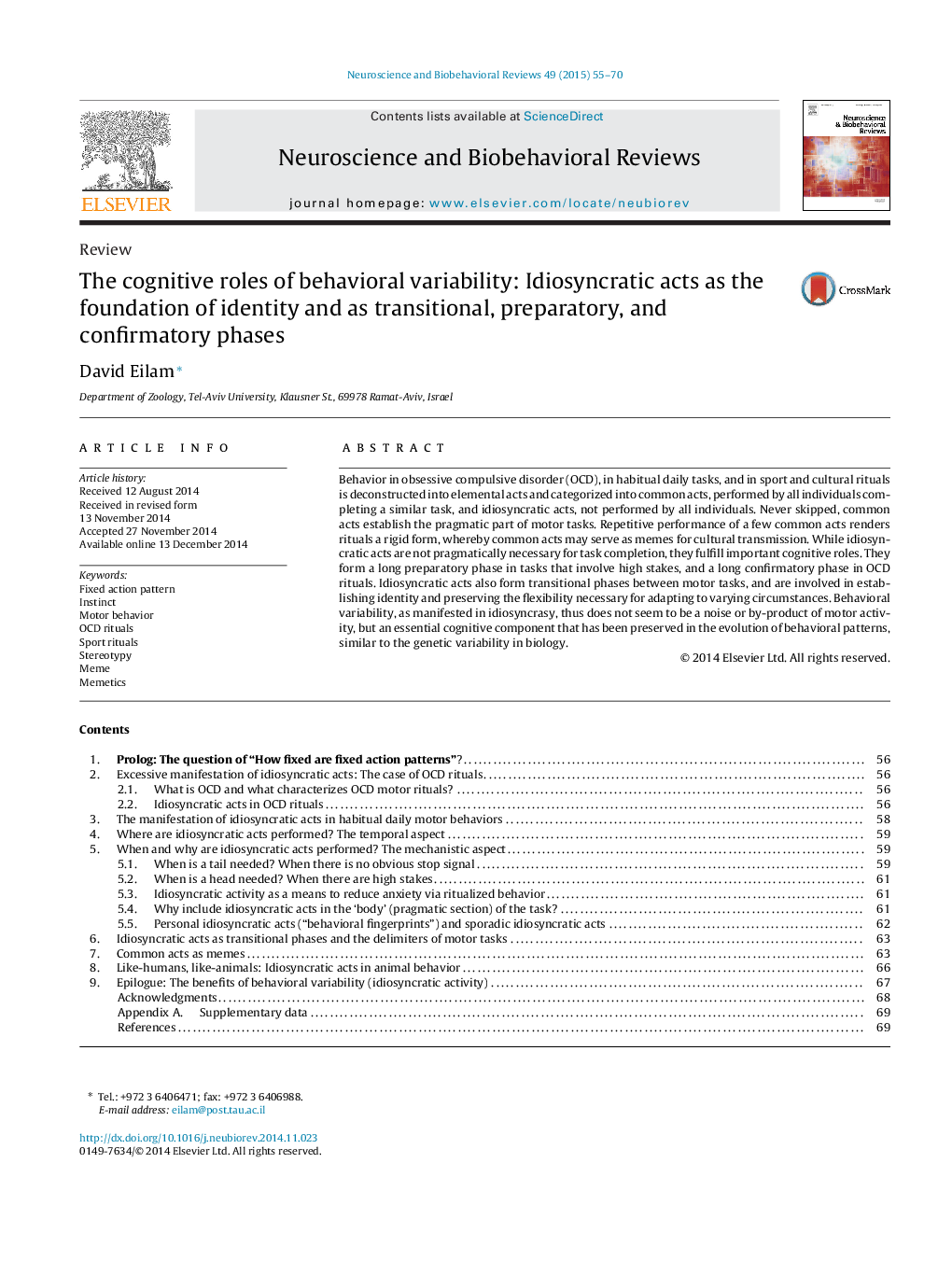| Article ID | Journal | Published Year | Pages | File Type |
|---|---|---|---|---|
| 7303666 | Neuroscience & Biobehavioral Reviews | 2015 | 16 Pages |
Abstract
Behavior in obsessive compulsive disorder (OCD), in habitual daily tasks, and in sport and cultural rituals is deconstructed into elemental acts and categorized into common acts, performed by all individuals completing a similar task, and idiosyncratic acts, not performed by all individuals. Never skipped, common acts establish the pragmatic part of motor tasks. Repetitive performance of a few common acts renders rituals a rigid form, whereby common acts may serve as memes for cultural transmission. While idiosyncratic acts are not pragmatically necessary for task completion, they fulfill important cognitive roles. They form a long preparatory phase in tasks that involve high stakes, and a long confirmatory phase in OCD rituals. Idiosyncratic acts also form transitional phases between motor tasks, and are involved in establishing identity and preserving the flexibility necessary for adapting to varying circumstances. Behavioral variability, as manifested in idiosyncrasy, thus does not seem to be a noise or by-product of motor activity, but an essential cognitive component that has been preserved in the evolution of behavioral patterns, similar to the genetic variability in biology.
Related Topics
Life Sciences
Neuroscience
Behavioral Neuroscience
Authors
David Eilam,
